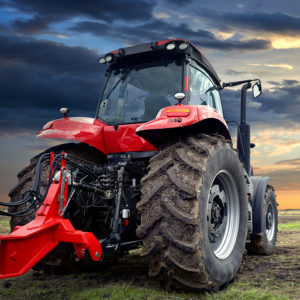American farmers aren’t having an easy time of it right now, between the continuing trade dispute with China, stalling of the new North American trade pact in the House, and devastating floods throughout the Midwest.
CoBank’s quarterly rural economic review, released last week, reported: “U.S. agriculture will face challenges in 2019 as slowing domestic and global economic growth rates, trade talks continue and weather casts uncertainty in the short- and long-term markets.”
Fortunately, the latest technologies coming out of American startups and universities may allow U.S. farmers to not only face up to these risks but also become global leaders in a new agricultural revolution.
Record flooding has dealt a particularly savage blow to American agriculture, destroying both crops and grain stockpiles across a large swath of the country’s Farm Belt. In Nebraska alone, early estimates of the loss are approaching $1 billion, while Iowa governor Kim Reynolds fears that damages in her state may exceed $1.6 billion.
Ranchers are coping with their own issues. Calving season should be in full swing by now, but instead farmers are struggling to protect livestock from flooding and to get clean water to their animals. “Those that started calving a little bit earlier, they’ve been dealing with blizzards and snow and ice and they are already looking pretty haggard,” said Bill Thiele, board president of the Nebraska State Dairy Association; “(a friend of mine has) already lost 40 calves in the last couple of days. It’s not getting much easier.”
The flooding has been so severe that governors across Nebraska, Iowa and Missouri have declared a state of emergency. Nor are swamped fields and lost livestock the only problems the region is confronted with; collapsed roads and infrastructure mean farmers may not see their incomes restored for up to two years.
Worse still, the challenges faced by American farmers look set to snowball: the country’s agricultural regions face a high risk of continued flooding this year and in the years to come. “This is shaping up to be a potentially unprecedented flood season,” said Ed Clark, director of NOAA’s National Water Center.
There is a serious fear that, confronted with this sizable challenge, many farmers may give up on the industry altogether. A mass exodus from the agricultural sector, however, poses an existential risk. The number of U.S. farms fell by 100,000 between 2010 and 2017, according to the U.S. Department of Agriculture — a highly problematic decrease given that climate challenges and a growing population mean that farmers need to produce more food despite a smaller labor force and declining yields. Indeed, with the world’s population set to soar above 9 billion in 2050, agricultural regions around the globe will need to increase their food production by 70 percent.
At the same time, however, the 2020 budget released by the Trump administration proposes a 15 percent cut to funding for USDA, arguing that the body’s subsidies to farmers are “overly generous.” A thriving agricultural sector has been the key to the developed world’s economic success, meaning that the industry’s decline should be ringing alarm bells across the board. Instead, many farmers feel as if they are fighting a lonely battle.
These obstacles facing farmers, while substantial, aren’t impossible to overcome. In fact, there are a number of promising technologies that can help farmers achieve higher yields, rely less on chemicals, and even mitigate the effects of natural disasters like the floods currently ravaging the Midwest.
A team from the University of Nebraska-Lincoln, for example, is working to change wheat from a self-pollinated to cross-pollinated crop to take advantage of “hybrid vigor” in a bid to boost yields, nutrients and environmental tolerance. At the same time, researchers at Fort Valley State University are using drones to identify and remedy problematic regions in crop fields.
Small and large companies alike are proposing innovative solutions to the agricultural industry’s problems. One startup, Consumer Physics, is developing a near-infrared spectrometer that will allow dairy farmers to accurately gauge the moisture content of the silage they feed to their cattle. Given that feed makes up 60 percent of dairy farmers’ costs and that cows fed drier silage produce higher-quality milk, the spectrometer’s precise measurements could allow dairy farmers to produce high-quality milk while reducing the amount of expensive feed additives they use.
The most promising startups are often bought by large companies in the industry, like Blue River Technology, whose See & Spray system was purchased by tractor titan John Deere. See & Spray’s futuristic technology centers around a deep-learning algorithm, similar to how Facebook recognizes faces, which allows the system to distinguish between weeds and crops. This could cut herbicide use up to 90 percent, as the chemicals’ spray could be very finely targeted.
Agriculture has been the bedrock of American society for centuries, and the burgeoning agricultural technology sector should be appreciated for the opportunity it is. The United States has always been a world leader in developing and promoting technological innovations, and American fields should be used to write a global roadmap to a climate-proof, hunger-free future.

